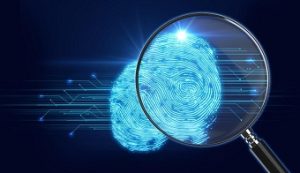
Fingerprint biometrics is hugely relevant in the current landscape. Even amidst other newer developments, fingerprint authentication provides convenience and affordability. There are talks rife about how the coronavirus pandemic has changed the outlook towards fingerprint biometrics. What is currently the most used authentication technology is being speculated to be unsafe, when compared to other touchless biometrics and that its usage in the future would decrease significantly. However, the advancements being made in this sphere indicate a totally opposite view.
• The utility of fingerprint biometrics,
• The advancements being made in fingerprint authentication tech, and
• The future relevance of fingerprint biometrics.
When biometric authentication had started getting attention, at the beginning of the millennium, it broke the barriers of people’s beliefs that such technology only existed in sci-fi movies. A world of opportunities had opened up for tech developers and manufacturers, and everyone wanted a piece of that cake.
Out of all the biometric identifiers, fingerprints have been in use the longest, probably from around the 1800s. Newer biometrics, such as facial & iris recognition and retinal scans, were only possible once technological advances made devices that could process these identifiers.
Any technological advancement depends on the development of all the sub-systems it operates with. Therefore, developing fingerprint authentication wouldn’t have been possible, without having faster fingerprint processors, thinner and more compact sensors, and more accurate and efficient firmware and algorithms.
Today’s fingerprint recognition devices are more secure than their previous generations, which is why they are still widely used for authentication. As the situations and utility factors become more complex, this technology will surely continue to improve.
Normally, a fingerprint is obtained by scanning the surface of the skin. The efficiency of the scanner plays an important role here, where if the fingerprint isn’t clear (the finger is dusty, soiled, has cracks, is damaged), it won’t be scanned correctly and hence, won’t be authenticated.
Many manufacturers have tried to neutralise this, by developing powerful scanners and processors that aren’t affected by such factors. These subsystems will also be able to prevent false authentication to a greater degree now.
In more recent developments, a new subsurface fingerprint biometric system has been invented that can reportedly identify individuals from skin layers around 200−400 µm deep under the finger surface. Called the Dubbed Frame Grabber, this new system can identify fingerprints that have been significantly damaged, like having been burnt or have become unrecognisable due to injuries.
BitFlow, a digital camera link and CoaXPress frame grabber manufacturer announced the development of this technology in 2015 and it has now reached the testing phase. The developers are keen on launching this frame grabber soon and looking at the already widespread use of fingerprint technology, it is assumed to be priced at a reasonable cost.
Fingerprint spoofing is basically duping a fingerprint scanner into authenticating an artificial fingerprint created by an imposter. The imposter who has access to the actual user’s fingerprint creates a fake biometric identifier, using various materials, such as paper, modeling clay, glue, etc. The earlier generation fingerprint devices couldn’t easily identify between the two, thus resulting in a higher rate of spoofing.
As discussed earlier, fingerprint sensors have evolved and employ methods, such as static analysis, dynamic analysis, and AI-enhanced recognition that consider various biometric identification parameters, including sweat pores, skin flexibility, blood flow detection, etc., to distinguish a live human fingerprint from a fake model and thus, reduce the chances of fingerprint spoofing.
There’s a new method that helps crime investigators, which is based on Matrix-Assisted Laser Desorption Ionisation Mass Spectrometry Imaging (MALDI-MSI). It can detect human blood and DNA signatures from fingerprints that are stored in the cloud storage of the forensic department.
According to one of the researchers of this method, it is already in use by crime scene investigators. It is soon due for application by the police department as well and would help in quickly identifying people, saving precious time.
Considering how skin contact with anything is deemed potentially dangerous due to COVID-19, a Europe-based market renowned firm in security and identity solutions has reportedly been in the process of developing a touchless fingerprint recognition system that would allow users to gain access by simply waving their fingers or hands in front of the scanner, rather than going for precise finger contact. If successful, this will be a much safer, sophisticated, and practical way of analysing fingerprint biometrics.
Overall, improved hardware and software, and more efficient algorithms have drastically reduced the processing time of fingerprint identification and verification. Authentication systems are better prepared to recognise and adjust to user behaviour, and environment conditions. Most of the scanners now use LEDs that keep power consumption essentially low, as a result, improving efficiency and maintenance.
People use fingerprint biometrics in their routine life to unlock a phone or the door to the office, verify identities, gain access to restricted/exclusive areas, etc. Biometric technology is ruling the world. in terms of affordability, scalability, and convenience. Of course, other technologies are being developed rapidly and all biometric authentication methods have their own pros and cons. However, the ease of use that fingerprint authentication has provided to people will be hard to replace.
With the aforementioned developments expected to hit the market in the near future, the speculations about fingerprint authentication becoming redundant will eventually die down, welcoming a new era for this biometric identifier.











